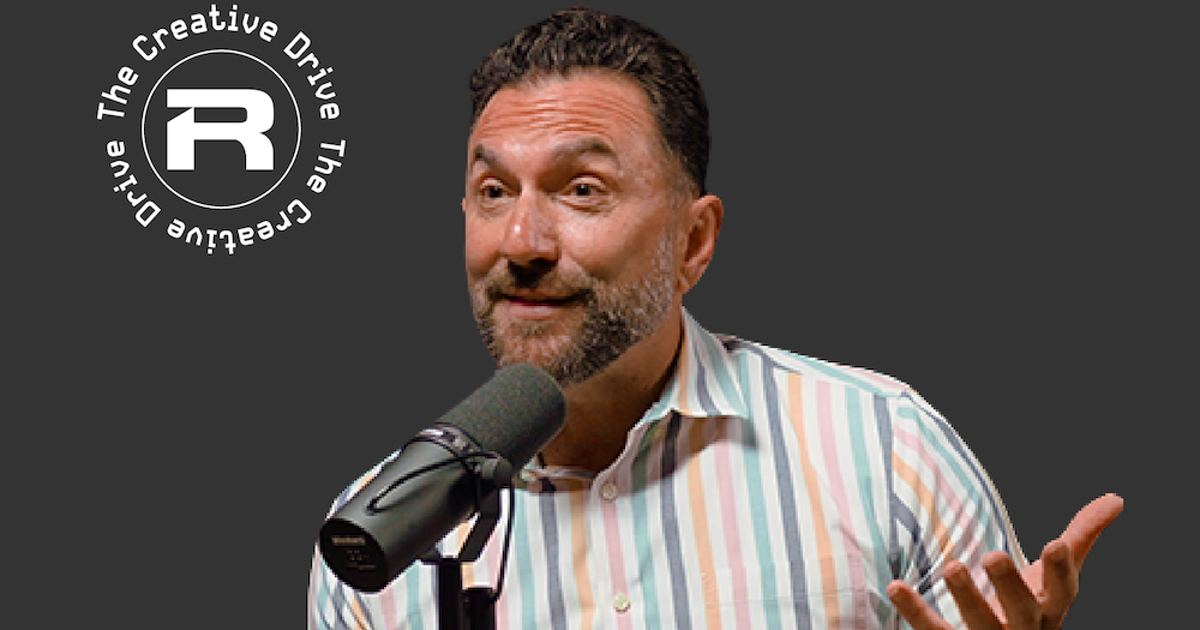Copyright The Atlantic

When I heard about the “Live Translation” feature of Apple’s newly released AirPods, what came to mind was my first night out in Berlin more than 20 years ago. I was just out of college, an American on a research scholarship plunging headlong into German. In the crowded warmth of a smoke-filled bar, amid music, laughter, and the blur of jet lag and alcohol, I tried to keep up with conversations that constantly threatened to outpace me. I pieced together what I could from the fragments I understood, leaning on gesture, tone, facial expression, and context to bridge the gaps. My replies, halting and imprecise, were limited by what I was able to say. What would have flowed effortlessly in English—and what a pair of earbuds could now make frictionless—demanded improvisation and an almost electric alertness. I remember telling a German literature student about my undergraduate thesis on Paul Celan and only half-following her enthusiastic response, which, I gathered, had something to do with a product for which her home region was famous. How might this relate to the Romanian Jewish poet and Holocaust survivor? Then it struck me, just in time, that she’d misheard my pronunciation of his name as Porzellan. I nodded along at the interesting things she must have been saying about porcelain. As the night went on, I began to enjoy a peculiar freedom in being cut off from the full range of my native eloquence. Thrown back on reduced resources, I had to reach for blunter, more elemental means of expression. Without the usual layers of tact and verbal finesse—those elaborate structures that so often serve as buffers against self-exposure—I found myself speaking with a rawness that was both humbling and unexpectedly exhilarating. Later that night, as I lay on my mattress atop the makeshift loft in my sublet, words and snatches of sentences whirled through my head, and with them came a kind of euphoria—the sense of my mind being shunted onto new tracks. Over the following year, I could trace my linguistic reorientation through milestones: my first lovers’ quarrel, my first pun, my growing ability to joke and flirt within the rhythms and social codes of German in that particular place and time. These moments weren’t just markers of intellectual progress; they signaled a redrawing of my perceptual and emotional boundaries that no automated translation could replicate. Apple is the sponsor of this year’s Superbowl halftime show, to be headlined by Bad Bunny, the world-famous Puerto Rican musical artist. Conservative politicians, including House Speaker Mike Johnson and President Donald Trump, criticized the NFL for choosing a performer who sings almost exclusively in Spanish. When Bad Bunny hosted the Saturday Night Live season premiere last month, he addressed the backlash by delivering part of his monologue in Spanish. Then he told the audience that if they didn’t understand what he’d just said, they had four months to learn. The provocation was at once playful and serious—a way of challenging his audience to stretch toward him rather than accommodating them. Bad Bunny and Apple may be partners in the Superbowl, but in a sense they are offering two opposing models of cross-linguistic encounter: One invites people to struggle with another language, to inhabit something unfamiliar; the other sells them the promise of bypassing that effort entirely. The translation technology itself is astonishing, relying on large language models to all but realize the fantasy of the “Babel fish” from The Hitchhiker’s Guide to the Galaxy—instant communication with anyone, in any language, simply by placing a device in your ear. Yet as people embrace these transformative tools, they risk eroding capacities and experiences that embody values other than seamlessness and efficiency. As a professional translator, I’m hardly an impartial judge of these trade-offs. My career translating German-language literature grew out of a lifelong preoccupation with languages, literatures, and cultures beyond my own. Spending my days in the space between English and German has given me a deep appreciation for what’s required to cross a linguistic divide: the mental recalibration, the negotiation between different ways of structuring the world, the humility and curiosity that come with navigating a foreign context. My work perpetually puts me back where I was at the start of my year in Berlin: out of my depth. The writers I’ve gravitated to—Friedrich Hölderlin, Franz Kafka, Daniel Kehlmann—offer no straightforward path from German into English. Translating Kafka’s diaries took eight years; they confronted me with a language that mocked any attempt at mastery, looping back on itself, refusing to settle. Translation is less a matter of applying what I already know than of working slowly through uncertainty, allowing myself to be frustrated. To translate is not simply to transfer meaning but to attend to differences—of culture, time, thought, expression—that evade perfect alignment. I was reminded of this not long ago by a line from Bertolt Brecht, inscribed on a black stone pillar beside his statue outside the Berliner Ensemble theater: Die Veränderbarkeit der Welt besteht auf ihrer Widersprüchlichkeit. The line’s phrasing—“The changeability of the world rests on its contradictoriness”—is characteristically German, stringing together conceptually dense nouns. I pondered how I’d translate it, and each version I came up with tipped the balance differently: “The world’s capacity for change lies in its contradictory nature.” “The world can change because it is contradictory.” “The world’s contradictions make it possible to change it.” Such fine distinctions can’t simply be computed; they depend on being felt, weighed, chosen. It’s in these very instances, when experience and intuition are essential, that language-prediction technology falls short. This is especially true in spoken communication. With its hesitations and half-understandings, it draws people into a shared project of meaning-making. When I was living in Berlin, I realized that German offers specific opportunities for collaboration in conversation: Because the verb often comes last, you can set up the subject, object, modifiers, even the prefix, and leave the sentence hanging mid-word for your partner to complete. I’d begin, “Wenn man das System wieder ganz neu um- …” (“If one completely re- … the system”), and falter, my voice and face doing their best to convey what I was groping for. My partner might step in with umstellt (“rearranges”) or umbaut (“rebuilds”) or umdenkt (“rethinks”), and between us the sentence would find its footing. It wasn’t relayed fully formed from one of us to the other but took shape only through the exchange itself. Although one in five people in the U.S. speak a language other than English at home, studies have found that fewer and fewer Americans learn second languages outside the home. This trend suggests to me that the global dominance of English has diminished the need—and, over time, the desire—for native speakers to expand their linguistic terrain. Accustomed to being understood in most places and situations, they are rarely forced to experience what it means to be on the other side of the language divide. This can breed cultural complacency: the assumption that their perspective is universal because they haven’t had to struggle to express themselves in someone else’s terms. While native English speakers might feel like they can afford not to engage with other languages, the wider world continues to pay outsize attention to Anglophone culture. I’ve seen this asymmetry in my field for a long time. Far more books are translated out of English than into it. The rise of instantaneous AI translation could make drifting into insularity even easier, allowing users to “understand” the world without ever leaving the comfort of their linguistic home. Of course, this technology won’t just alter how we communicate; it also threatens to automate away an entire sector of skilled linguistic labor. Interpreters, translators, language teachers, subtitlers, and other specialists—people whose work relies on finely honed intellectual and creative abilities—now find our professions under mounting pressure from rapid technological change. In places such as the United Nations, simultaneous interpreters have long worked behind soundproof glass, inconspicuous yet indispensable, enabling multilingual deliberation for people who may scarcely register their presence. The same is true on a much larger scale: Translation work quietly undergirds the infrastructure of global life, including diplomacy, international law, commerce, education, and consumer transactions. The more effective it is, the more it tends to disappear from view. This invisibility sustains the illusion of frictionless communication—an illusion the AirPods’ translation feature seeks to make real, even as it is built on generations of accumulated human expertise, creativity, and ingenuity. Translators and interpreters, a largely freelance and economically precarious workforce, are particularly vulnerable to being supplanted by technology. In this our sector is hardly alone: Across many fields—copywriting, legal analysis, design—large language models are beginning to replicate tasks that were previously considered the preserve of trained human minds. History offers few encouraging examples of societies responding thoughtfully to such shifts. From textile workers in the Industrial Revolution to assembly-line workers in the age of robotics, once-stable fields have repeatedly lost out to technological innovation, while social policy has lagged far behind. Many more professions than ever may now be facing a similar inflection point. Technology has always made some kinds of work obsolete. The more insidious danger now is that it will impoverish ways of thinking and relating that once enlarged and enlivened experience, among them the effort of crossing a language barrier. As we face this prospect, the question of what we stand to lose has never been more pressing. The loss may be immense, even if it passes largely unnoticed. If I’d had the new AirPods when I first arrived in Berlin after college, I might have believed that I wasn’t missing anything. Cultural critics have long warned that our media-and-technology ecosystem conditions us to treat language as purely instrumental—a neutral conduit for shuttling information from point A to point B. But anyone who has lived between languages knows it is never only that. Each language carries its own map of the world. What resists smooth transmission isn’t an obstacle to communication, but part of its meaning and texture. Automatic-translation technology, by design, filters out that surplus as noise. As a literary translator, I’m drawn to precisely that which defies easy equivalence: rhythm, play, idiosyncrasy, cultural specificity, the shimmer of ambiguity. My work happens where languages don’t line up, where meaning must be reimagined rather than decoded and flattened. What I fear is that people will come to think of language as only what machines can translate, forgetting everything outside that frame. If technology promises to end the language barrier, we should ask: What else will it erase?



